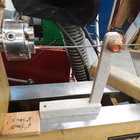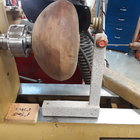When I first got a chuck for my mini lathe, I was cutting a mortise in the bottom of the blank to hold it when turning the inner diameter. After watching a numerous of videos, it seems many turners prefer to use a tenon. Is there any advantage to one way over the other?
I've tried both ways. The one thing that made me favor the mortise was the ability to rework some of my earlier pieces that hadn't met my expectations. With a tenon, once the piece is parted off, I'm pretty much stuck with what I've got.
Still learning, and just wondering what common practice is.
I've tried both ways. The one thing that made me favor the mortise was the ability to rework some of my earlier pieces that hadn't met my expectations. With a tenon, once the piece is parted off, I'm pretty much stuck with what I've got.
Still learning, and just wondering what common practice is.











